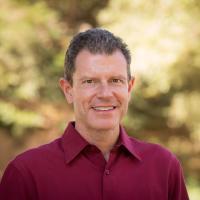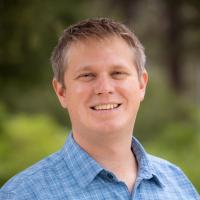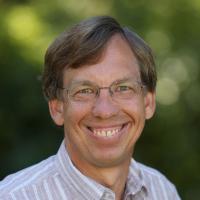Rapid scientific growth has created a significant demand for people well trained in physics and engineering.
Physicists seek a fundamental understanding of the physical universe. Engineers apply scientific knowledge to design and develop structures, machines and products. Students may pursue the engineering physics major with core components in both physics and engineering. The physics courses emphasize the fundamental science and mathematics essential for graduate study or professional work in physics. The engineering courses, while not comprising a complete engineering program, provide a strong foundation for an engineering career. State-of-the-art instrumentation, including a dedicated engineering facility, enrich students' experience in the laboratory. Opportunities exist for involvement in research with both physics and engineering faculty.
Sample Schedule
Fall (17)
- PHY 21: General Physics I (4)
- PHY 22: General Physics Lab I (1)
- MA 9: Calculus I (4)
- EN 5: Engineering and the Liberal Arts (3)
- General Education (4)
- PEA 32: Fitness for Life (1)
Spring (17)
- PHY 23: General Physics II (4)
- PHY 24: General Physics Lab II (1)
- MA 10: Calculus II (4)
- EN 50: Statics and Engineering Software (3)
- General Education (4)
- PEA Elective (1)
MAYTERM (not required)
- Mayterm GE Elective (4) on campus or abroad
SUMMER
- Suggested research with Westmont faculty or REU
Fall (16)
- PHY 25: Modern Physics (4)
- MA 19: Multivariable Calculus (4)
- EN 40: Mechanics of Materials (3)
- General Education (4)
- PEA elective (1)
Spring (18)
- PHY 26: Modern Physics Lab (1)
- MA 40: Differential Equations with Linear Algebra (4)
- PHY 142/143: Circuits and Electronics with Lab (5)
- General Education (8)
SUMMER
- Suggested research with Westmont faculty or REU
Fall (16)
- PHY Elective (4)
- CS 10: Design and Implementation of Solutions to Computational Problems (4)
- General Education (8)
Spring (15)
- EN 120: Thermodynamics (4) or PHY 160: Thermodynamics (4)
- EN 080: Junior Design (3)
- General Education (8)
SUMMER
- Suggested research with Westmont faculty or REU
FALL (17)
- CHM 5: General Chemistry I (4)
- PHY 198: Research (1)
- General Education (12)
SPRING (17)
- PHY 131: Classical Mechanics (4)
- PHY 195: Senior Seminar (1)
- PHY 170: Advanced Physics Lab (1)
- EN 110: Fluid Mechanics (3)
- General Education (8)
Faculty Highlights

Smashes atoms together at large-scale particle accelerator laboratories

A mechanical design engineer with extensive experience in CAD and prototyping

Demonstrates physics by lying on a bed of nails and walking on hot coals
Career Paths
The engineering physics degree prepares students with good academic records to enter graduate school in physics or engineering. They learn to think logically and analytically about the objective behavior of physical systems and acquire specific technical skills preparing them for a variety of careers such as:
- Medicine
- Law
- Secondary or College-Level Teaching
- Church Ministry
- Technical Writing
- Patent Work
- Geophysical or Marine Exploration
- Medical Technology
CURRENT DEPARTMENT NEWS
GRANT EXPANDS SEARCH FOR DARK MATTER
A Westmont researcher has won a grant to further his search for evidence of the presence of mysterious dark matter. The National Science Foundation (NSF) has awarded a $200,000 grant to Ben Carlson, Westmont assistant professor of physics, to continue his work on the ATLAS experiment at the Large Hadron Collider (LHC) at CERN, a particle physics laboratory in Geneva, Switzerland.
In the next step for his research, “Casting Light On a Semi-Visible Higgs Boson with Novel Triggers at ATLAS,” Carlson seeks evidence for physics Beyond the Standard Model (BSM), which might account for the presence of dark matter. Researchers say dark matter, which doesn’t appear to interact with the electromagnetic field, may account for about 85 percent of material in the universe. It’s extremely difficult to detect because it does not absorb, reflect or emit electromagnetic radiation including light.
Funds from NSF and other agencies around the world built the LHC machine and ATLAS, a large particle detector facility, as basic science tools. “The 2012 discovery at the LHC of a Higgs boson with mass close to 125 GeV, about the mass of a tungsten atom, represents both the crowning achievement of the Standard Model of particle physics and a hint beyond it,” Carlson says. “How can a light Higgs boson possibly survive huge, destabilizing quantum effects without new, undiscovered physics?”
The LHC recently started its third operational round at higher energy and increased event samples. Carlson says it’s possible that evidence for BSM physics could emerge in the next few years.
The grant allows Westmont’s undergraduate students to participate in the analysis of the LHC data and explore new machine-learning techniques. Two Westmont students, Sean Ryan '24 and Chandler Baker '24, are working in Geneva on collecting data with the ATLAS detector as part of summer research that Carlson oversees.
The NSF, an independent federal agency with a budget of $8.8 billion in 2022, promotes the progress of science and keeps the United States at the leading edge of discovery.
Engineering Physics Alumni Highlights
Christina Dubell ('21) was an outstanding student, musician, and leader at Westmont, exemplifying the Christian liberal arts. She maintained a double major in Engineering Physics and Music while serving as the Concertmaster of the Westmont Orchestra and first violinist of our top string quartet for numerous concerts and venues. From the outset of her time at the college she was driven to accomplish every goal for mastering both the intuition and mathematical complexities of physics and the creative but also technical work of understanding and producing beautiful music. She completed the major honors project "Measuring Protein Adsorption with "EW-CRDS" in Physical Chemistry with Professor Michael Everest and earned the Outstanding Graduate Award in both the Physics/Engineering and Music departments for 2021. Christina is currently pursuing a PhD in Biomedical Engineering at Texas A&M University.
Logan Hodgson ('21) came to Westmont as an Augustinian Scholar and left as a triple major in Engineering Physics, Music, and Mathematics (not the easiest path to graduation). A brilliant student in his classes, he also served as an outstanding TA that many students came to depend on. He combined an uncanny intuitive understanding of physics with the mathematical chops to handle the hardest of calculations. He served as principal cellist of the Westmont Orchestra on numerous occasions and was a very active chamber musician in the top string quartet. An accomplished researcher, he also worked at Las Cumbres Observatory analyzing thermal noise in CCD arrays as well as developing software for tracking asteroid orbits. Logan also earned the distinction of winning the Outstanding Graduate Award in both the Physics/Engineering and Music departments for 2021. He is currently pursuing an M.S. in Electrical Engineering at Cal Poly SLO.
Faith Palombi ('21) excelled as an Engineering Physics major at Westmont. A gifted researcher, Faith worked closely with Westmont physics professors Robert Haring-Kaye and Michael Sommermann on novel research projects in nuclear physics and astronomy, respectively. In particular, her valuable contributions to the nuclear physics research resulted in her status as second author of a paper recently submitted for consideration as a Regular Article publication in Physical Review C, the premier domestic journal for nuclear physics research. Her outstanding results were also on display as a poster presentation at the 2021 Westmont College Student Research Symposium. Faith is currently working as a Software Engineer for General Motors in Austin, Texas.
Bethany Sutherland (’12), a dancer and an artist, earned a Bachelor of Science in engineering physics at Westmont, embracing both science and the arts. She works as an associate project manager at Santa Barbara Imaging Systems.